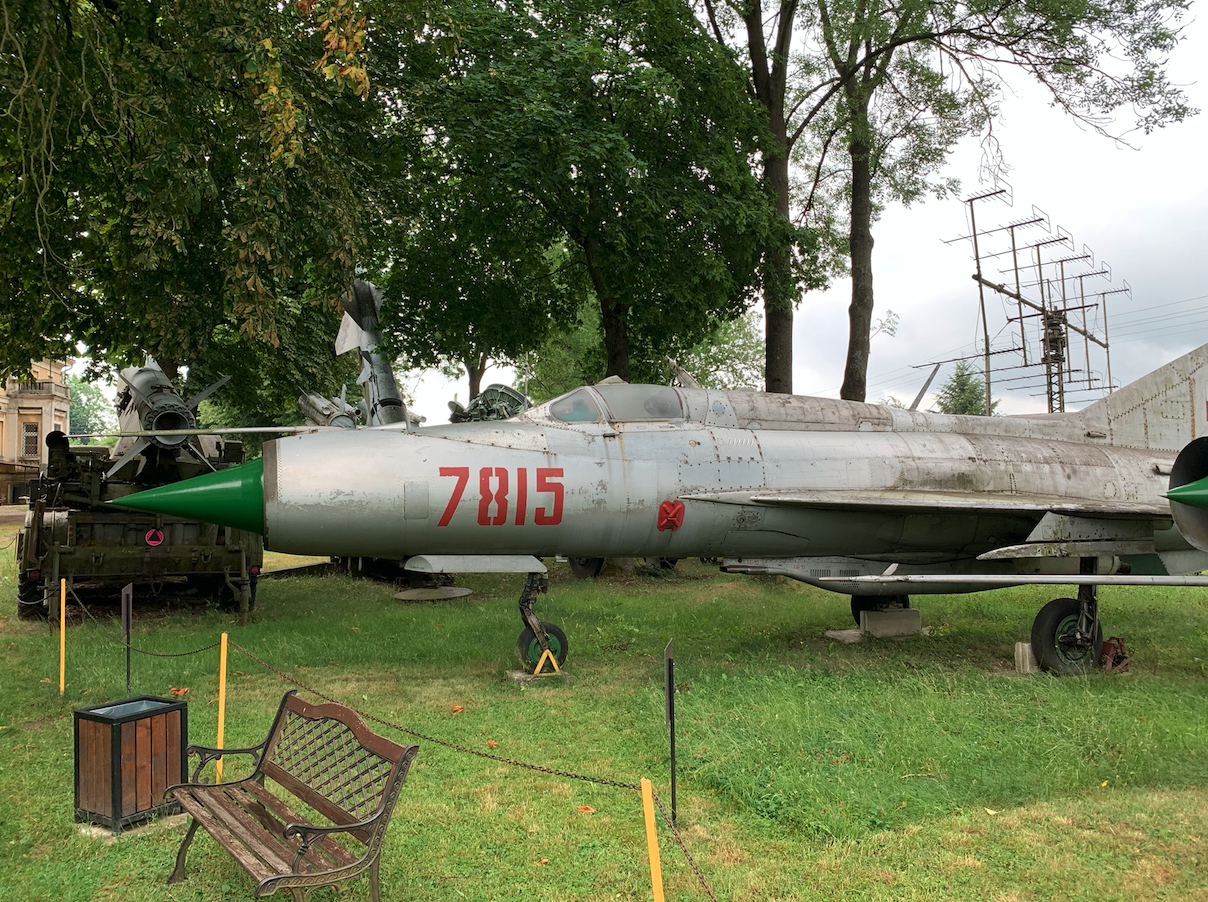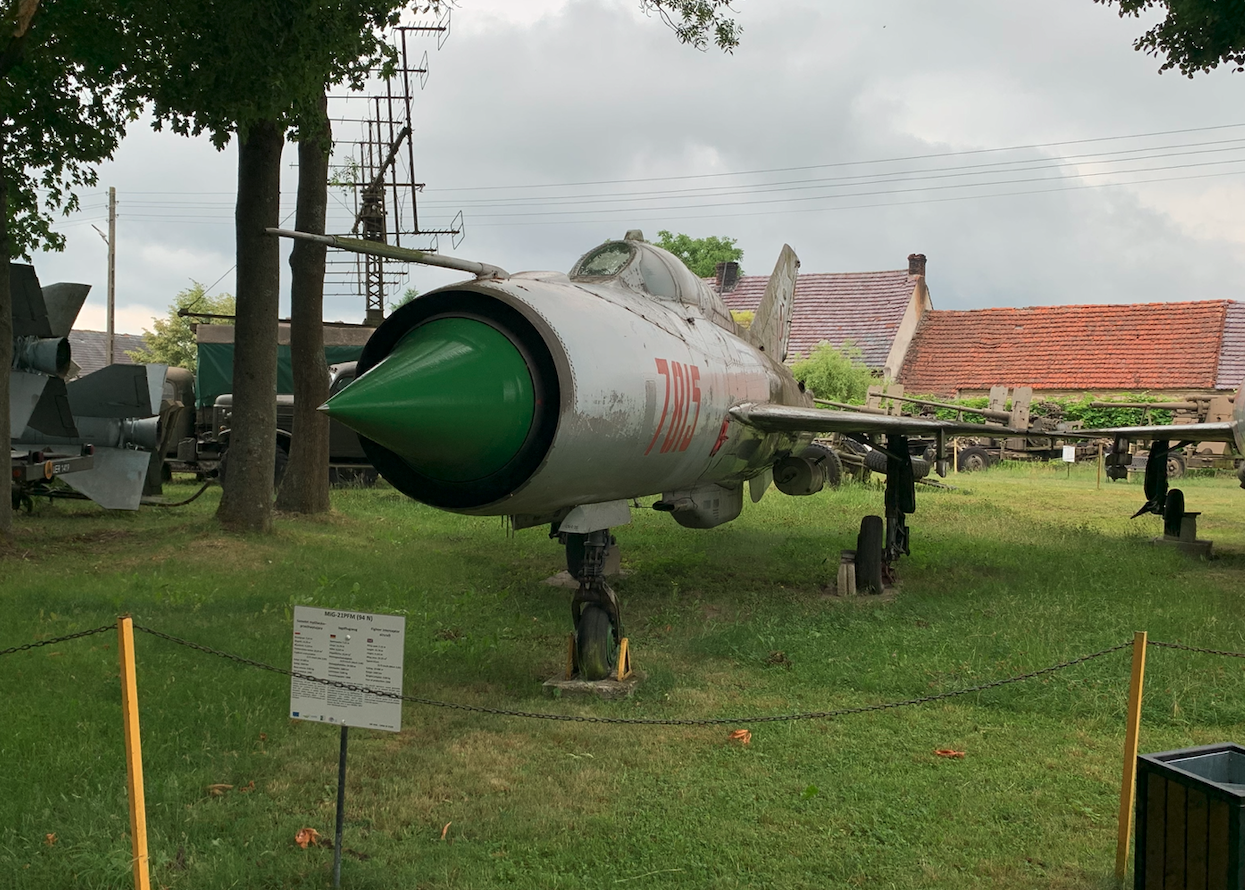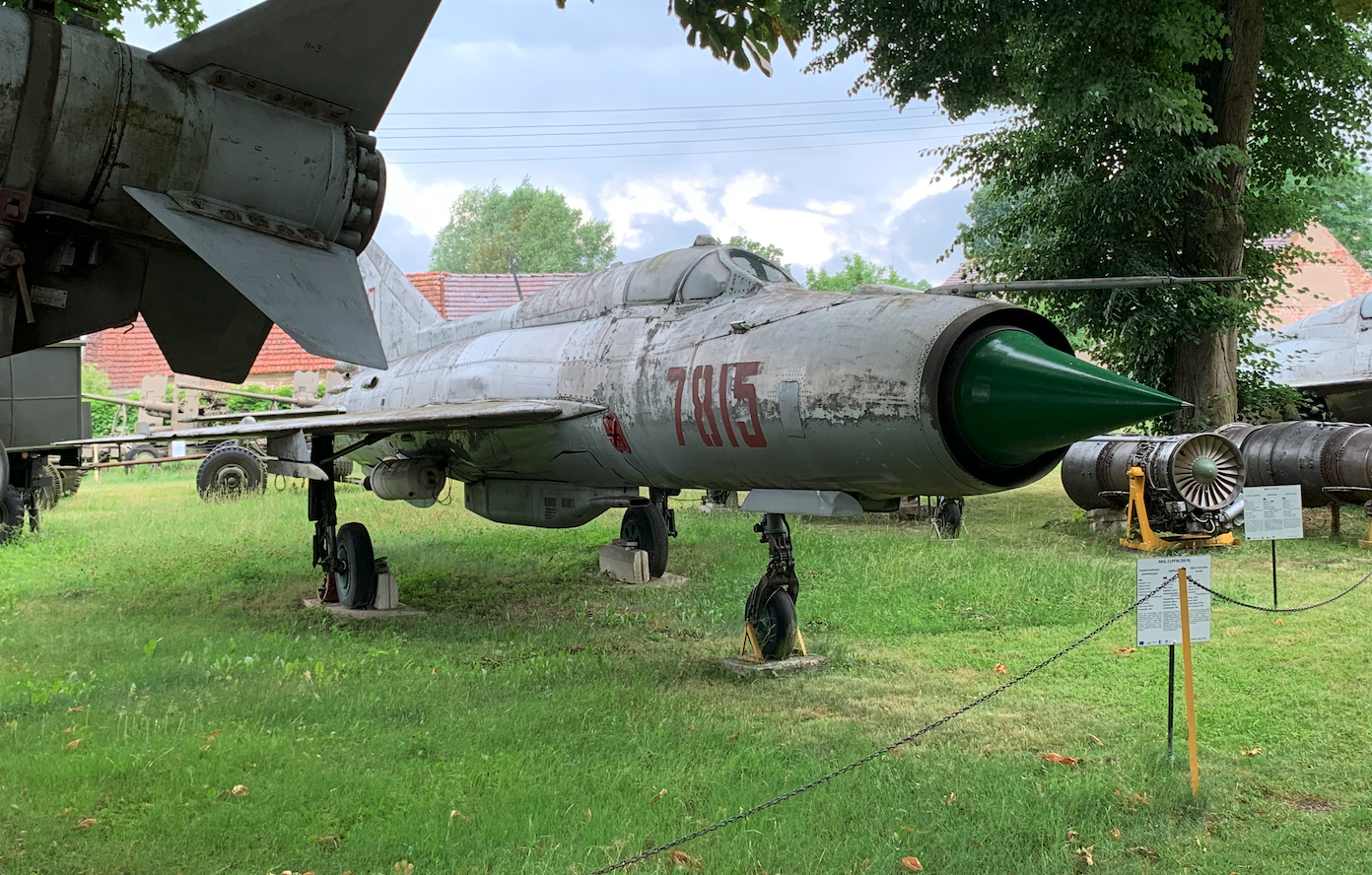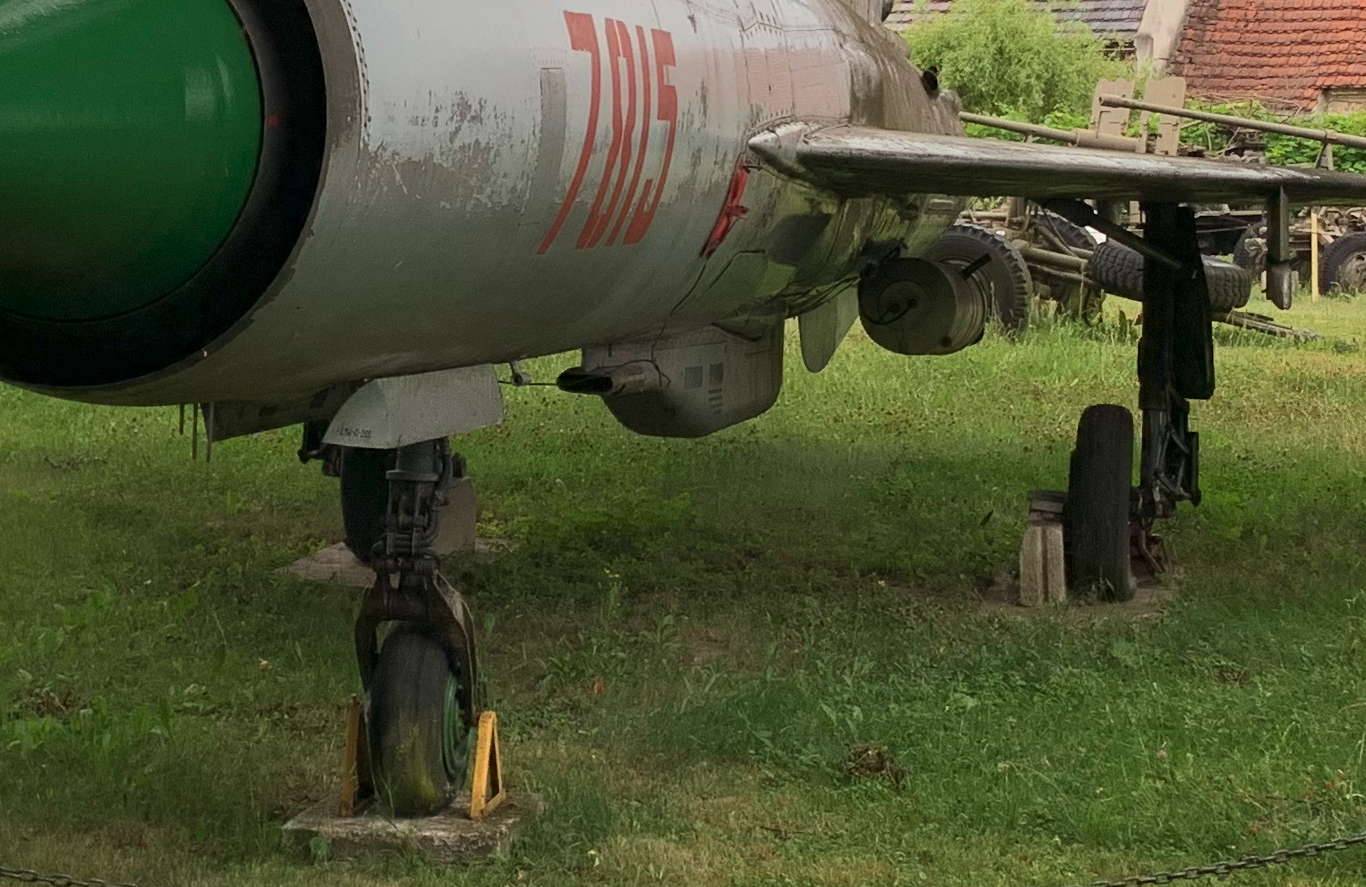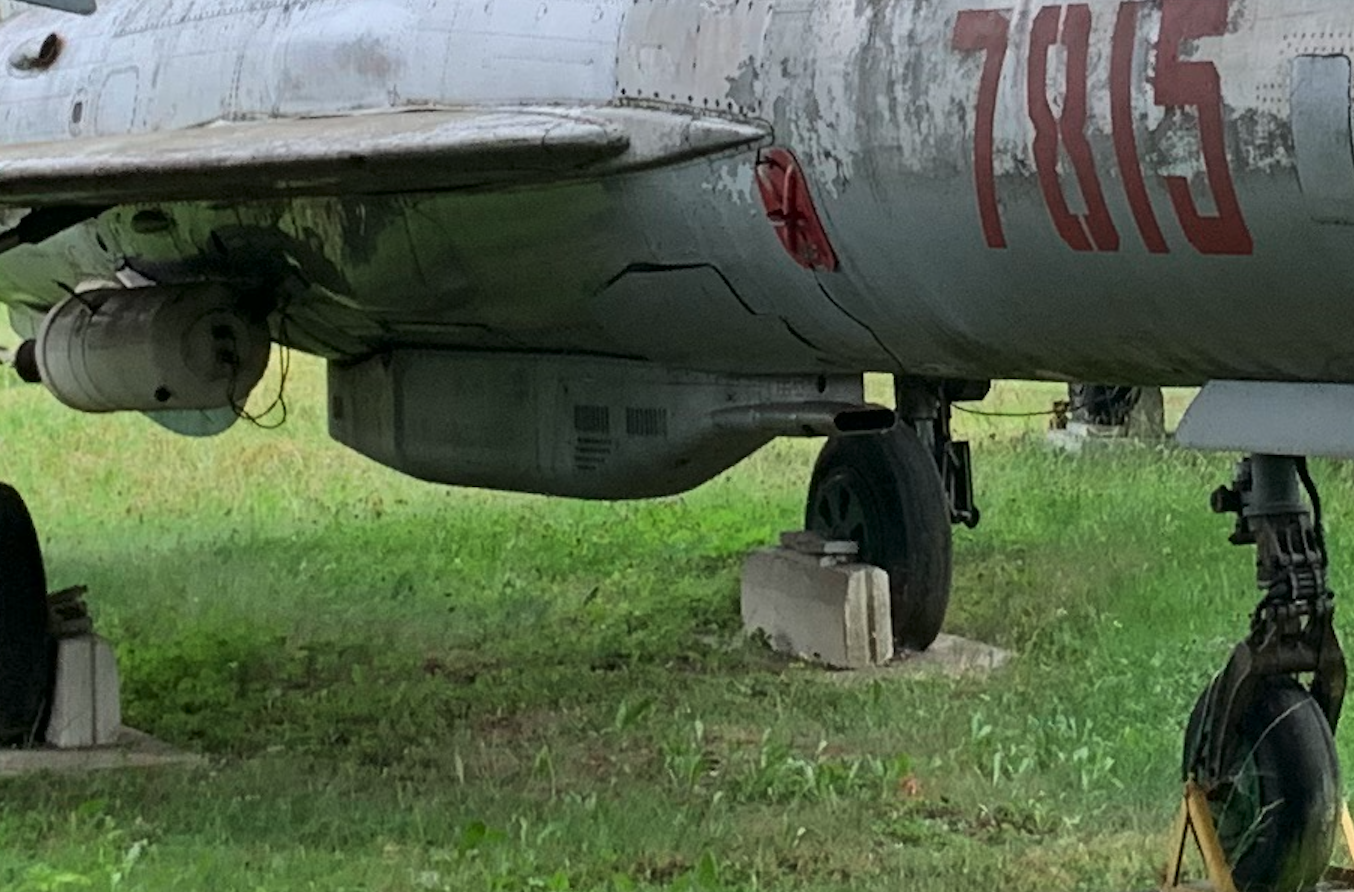Drzonów 2022-08-16
Mikojan & Guriewicz MiG-21 PFM nb 7815.
The MiG-21 PFM (type 94, modernized) planes were produced in Gorky for the CCCP in 1964-1965, and in Moscow for export in 1966-1968. Deliveries of MiG-21 PFM planes to Poland were completed in 1969. In total, the Polish Army received 132 machines.
The MiG-21 PFM 7815/94 N nb 7815 aircraft was delivered to Poland as the 127th MiG-21 PFM on September 25, 1968. The plane was used in the 9th PLM. The off-duty plane was handed over to the museum in Drzonów near Zielona Góra.
GP-9 shooting cartridge.
The aircraft presented in Drzonów has a GP-9 container (Gondola Puszecznaja) with a GSz-23 Ł double-barreled cannon with a supply of 200 rounds suspended under the fuselage. The GP-9 container is rarely found in museums in Poland, therefore it is a unique exhibit.
It should be remembered that in the 1960s, as a result of the Vietnam War, after a period of negating the use of barrel weapons, the installation of cannons on board fighter planes was resumed.
The MiG-21 F-13 planes had one 30 mm cannon, built into the side of the fuselage. MiG-21 PF planes were deprived of their barrel armament. From the 7th production series, the MiG-21 PFM aircraft was able to suspend the GP-9 container with the GSz-23 Ł double-barreled cannon with a supply of 200 rounds. The GP-9 cartridge (Puszecznaja Gondola) was developed in 1965. The container is 3.99 m long, 0.40 m high, 0.36 m wide. However, the shooting container did not hit the target targets due to high vibrations during the flight. However, it was suitable for surface purposes. The container was mounted under the fuselage in place of an additional, suspended fuel tank. That is why the pilots did not like these weapons, because they limited the range of the plane, which was not very large.
SPRD-99 launch accelerators.
The Polish MiG-21 PFM fighters also had the option of supporting the launch with two SPRD-99 rocket accelerators. The acceleration was twice as high as in the traditional take-off. The plane leaves the runway after 8-10 seconds.
Accelerators are mounted to special hooks located on the hull. The first catch is a force catch. It is on him that the main force is transferred. The second catch stabilizes the accelerator fuselage, and after it is finished, it is unlocked and the accelerator falls off the plane under its own weight.
First, the accelerator is mounted to the fuselage without connecting the electrical connector. The pilot then starts the plane’s engine. Then he checks the aircraft systems, and finally the accelerator control switches "ПУСК. УСКОР." and "СБОРС УСКОР.". The remote then signals the technician to connect the electrical connector. After taxiing to the runway and obtaining permission to start, the pilot activates the above-mentioned switches on the desktop. The indicator lamps ready for ignition come on, separately for the left and right sides, "УСКОРИТ. ПРАВ." and "УСКОРИТ. ЛЕВ.". After starting the acceleration, the accelerators are started with the button "ПУСК УСКОРИТ.". This happens between 2 and 5 seconds from the start of the take-off roll and depends on the weapon set taken by the plane. Accelerators are generally activated at the latest when there is an additional fuel tank under the fuselage. Accelerators are only used when the airplane engine afterburner is running. Accelerators can also be used on unpaved runways. When they start to work, you feel a noticeable increase in tearing forward and a characteristic sound. The take-off run lasted from 7 to 10 seconds, and when the plane lifted off the ground, the speed was 340 – 350 km / h. The fact that the accelerator was finished was easily felt by the sudden drop in acceleration. The plane’s speed was already around 390 km / h. In a designated area, near the airport, press "CБPOC УCKOP." accelerators are dropped. The extinguishing of the lamps (mentioned above) means that the accelerators have fallen off.
Emergency situations were very rare and the methodology was also defined. In the event that both accelerators did not start, the pilot was to stop the take-off immediately and use all methods to stop the machine on RWY. When the decision to abort the take-off is made, it disables the accelerator control.
When only one accelerator was triggered. It manifested itself in a lower speed gain, less noise and slight turning of the plane, corrected with pedals. Usually it was possible to continue the take-off because it depended on the length of the RWY. The pilot then proceeds as when taking off without these devices.
When the accelerators fired before the engine entered max RPM and before the afterburner started. The pilot did not take off. He used the RWY to roll the plane over it to burn off the accelerator fuel.
When the accelerators didn’t come off. The pilot made another attack on the drop area and made another attempt. If this did not work, he made another attempt to create an overload greater than 1g. If there was no effect, the pilot reported KL (flight manager) and landed with the accelerators not thrown away, remembering to have about 200 liters of fuel less than in a normal landing.
Written by Karol Placha Hetman

